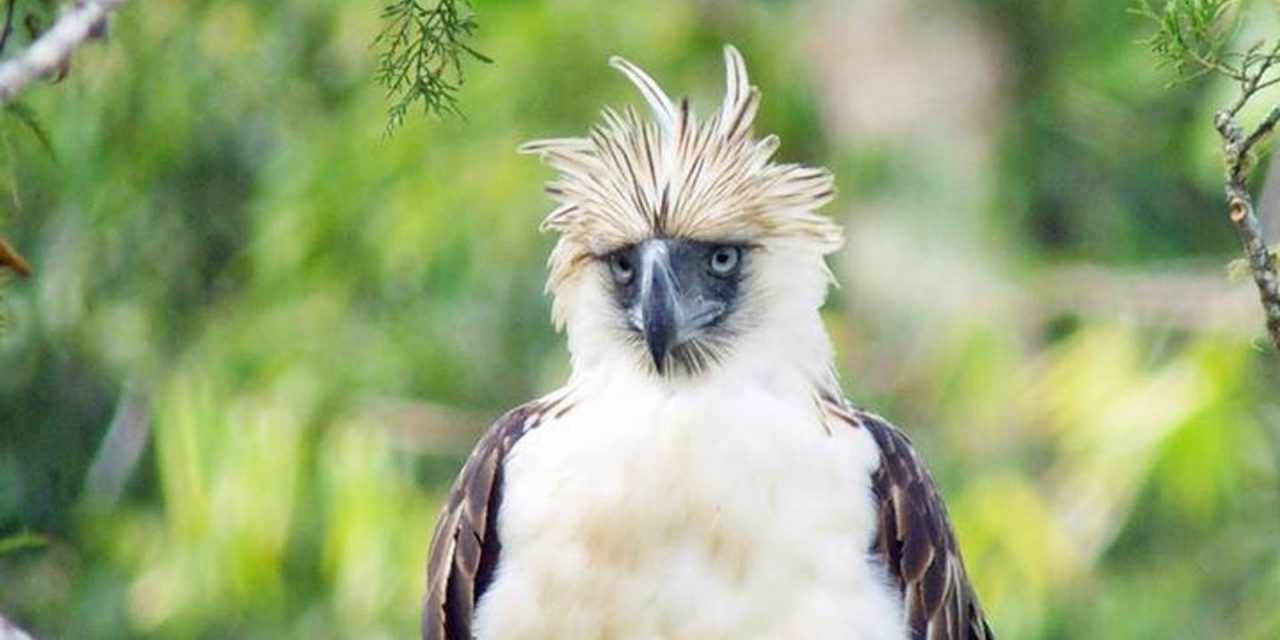
The Monkey-Eating Eagle Endangered

The Philippine Eagle, as its name suggests, is found only in the Philippines, an island country in Southeast Asia. While the Philippines consist of more than 7,000 islands, the Philippine Eagle is found only on four of them, all within the northern and eastern regions of the country.
Apart from being one of the largest eagles in the world, it could be argued that the Philippine Eagle is also one of the most striking. It has a massive dark black bill with a tinge of blue, neon yellow feet, and pale grey-blue eyes. Its cottony white belly contrasts with its darker back, and the fringe-like feathers on its legs match the long brown feathers that adorn its head and the back of its neck. Philippine Eagles are diurnal, which means they hunt, fly, build nests, participate in courtship activities and otherwise go about their business during daytime hours. They rest at night. Despite their large size, these eagles tend to be fast and agile in the air, which helps make them very successful hunters.
Though previously known as the Monkey-eating Eagle, this is a misnomer. They do eat monkeys, but they also prey on a whole host of animals, both large and small. They have been known to hunt bats, civets, flying squirrels, and macaques. They also eat birds, including other birds of prey, snakes and lizards. The diet varies depending on the island it lives on. Prey found in abundance on one island might be scarce on another.
Like the Harpy Eagle, Philippine Eagles are believed to stay with the same mate for their entire lives. However, if their mate is killed, they will search for a new partner. They construct huge stick nests that they build high in the main fork of a tree, often on a platform of ferns and orchids. Every other year, the female lays one large white egg, which must be incubated for about 2 months. After the young chick leaves the nest, it remains dependent on its parents for up to 17 months. Because of the long dependency period of their offspring, they usually breed only once every two to three years. They reach adulthood at 5-7 years of age.
Sadly, these creatures hold the title for being one of the most endangered raptors in the world. This eagle is endemic to an island nation, as wildlife on islands is more vulnerable to habitat loss and other detrimental actions simply because they have nowhere else to go. As more and more forest is cut, they are left with fewer and fewer places to go. This critically endangered raptor needs our help now more than ever.








